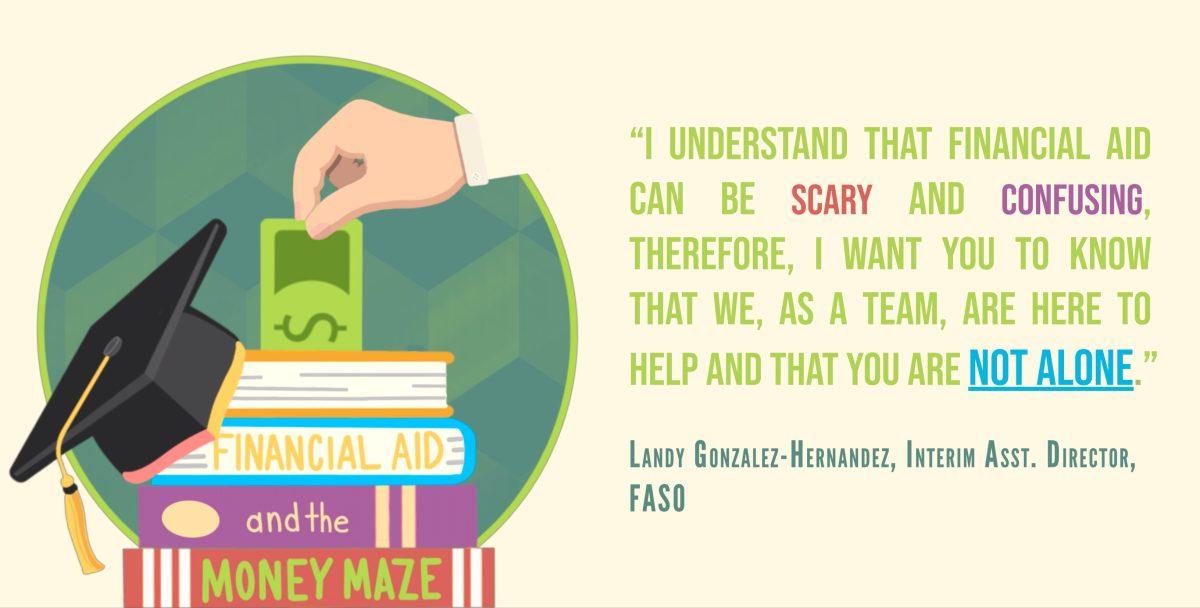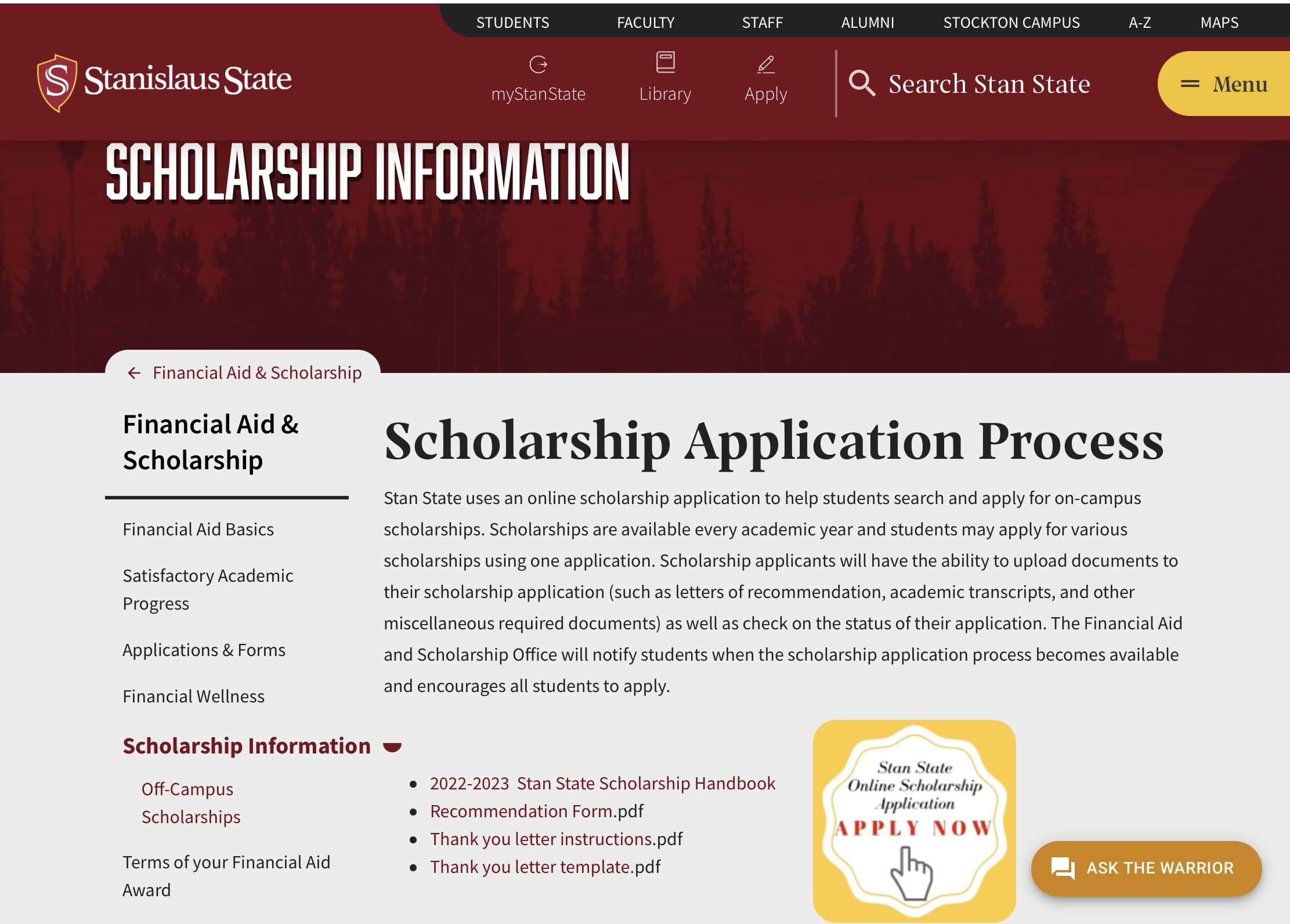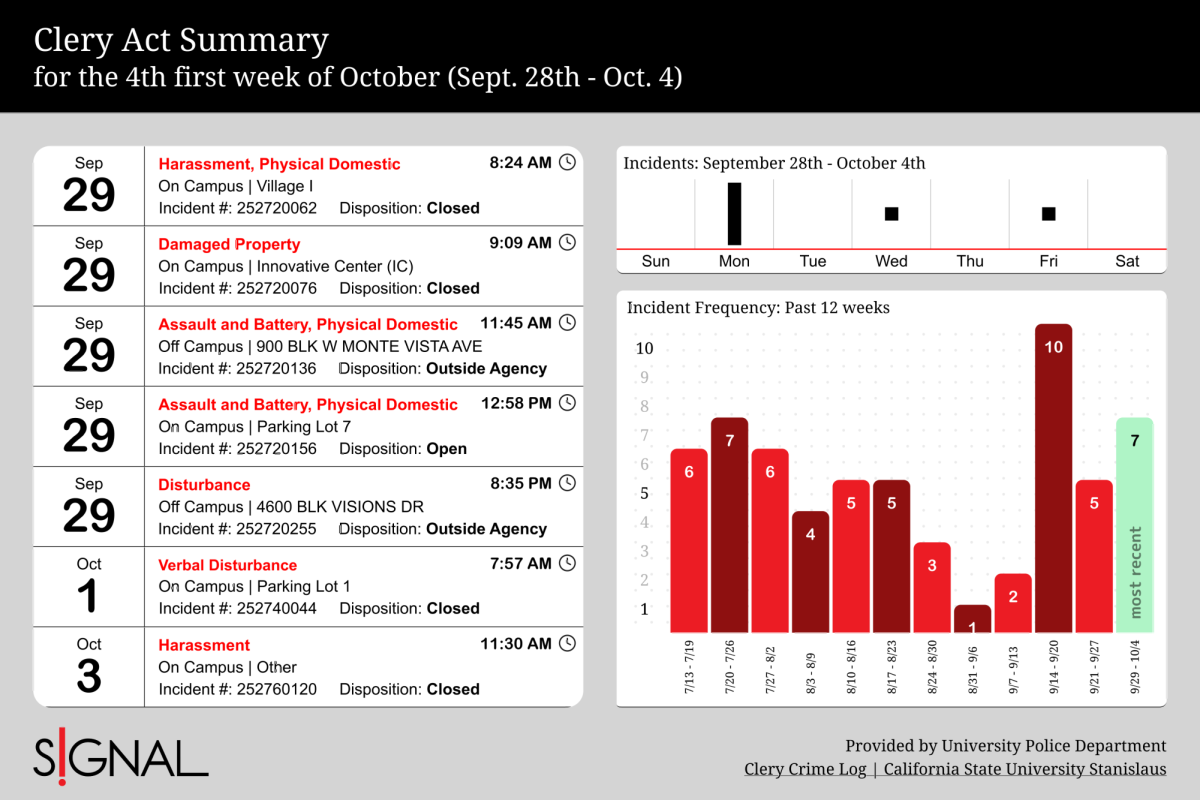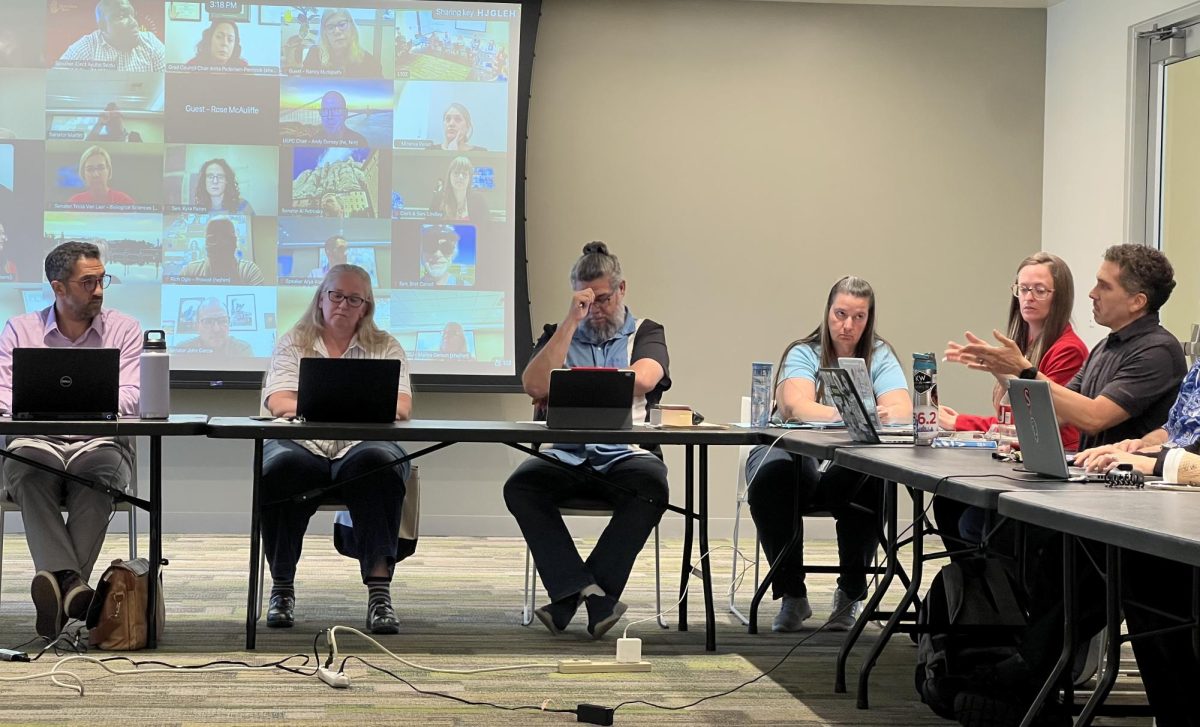“I understand that Financial Aid can be scary and confusing, therefore, I want you to know that we, as a team, are here to help and that you are not alone. If you need help understanding how to fill out a document, questions when filling out the FAFSA or CADAA applications, or understanding the award letter, please do not hesitate to reach out! But in the meantime, I hope this series, Financial Aid and the Money Maze, gives you the opportunity to find out about the services we offer, the ways you can contact us, and, most importantly, that we are here for you.”
- Landy Gonzalez-Hernandez, Interim. Assistant Director for the Financial Aid and Scholarship Office (FASO)
This is part 1 in a 4 part series
Paying for college is expensive. As a result, many students here at Stanislaus State must apply for as much financial aid as possible to avoid any out of pocket expenses. Thankfully, there are many options to choose from.
“Students have access to a lot of different types of aid to help fund their college careers, such as subsidized loans, unsubsidized loans, state and university grants, in addition to regular federal financial aid,” said Christina Goodeill, financial aid advisor with the Stan State Financial Aid and Scholarships Office.
But eligibility for these types of aid is limited by the Expected Family Contribution (EFC) from the FAFSA application and the cost of attendance for the university.
“The total sum of the student’s financial aid, whether it be loans, grants, scholarships or work study funds cannot exceed their estimated cost of attendance,” Goodeill explained. “So what happens is we take the cost of attendance, subtract the students EFC contribution off their FASFA-that gets us their ‘unmet need’. Then from there we award them scholarships grants and other types of aid.”
This “unmet need” impacts many Stan State students, even those who are eligible for financial aid. For a student whose EFC is high and is ineligible for federal financial aid, such as Christian Capuno (junior, Chemistry and Biology), many of these options are not available.
For Capuno, the only types of aid he can apply for are scholarships and university grants, which he uses to pay for his tuition.
“I generally receive about 75% of my tuition and fees in scholarships and grants,” Capuno shared.
Navigating how to apply for these scholarships can be quite daunting and is what brings students to Katrin Shahbaz, the scholarships coordinator for the Financial Aid and Scholarship office.
“Sometimes students feel it is more intimidating than it really is. Until we sit down an explain it to students, it’s worrying,” Shahbaz explained.
Shahbaz finds it is often helpful to split the scholarships into two main categories: on-campus scholarships, and external scholarships.
The on-campus scholarships are what she receives the most questions on as students ask about the scholarship process or seek her help in applying for specific scholarships.
“As the on-campus scholarship coordinator, I assist students with any on-campus scholarship questions or if they need assistance submitting an on-campus scholarship application,” Shahbaz said.
These on-campus scholarships consist of two major types: need-based awards and merit-based awards. Most of the merit-based awards come in the form of major specific scholarships whereas many of the need-based awards come in the form of grants awarded by the financial aid office itself.
Capuno applies for a number of these on campus scholarships, and for him, the application is simple and straightforward.
“It’s not too difficult, but it does take a decent amount of time to fill out,” he said.
The application is also easy to access and can be found under Scholarship Information on the Financial aid and Scholarship Office website. All you have to do is click ‘Apply Now’, log into the scholarship portal using your StanState Login credentials, and verify your identity using the Duo two-step verification code.
The general application form will ask for your basic information and then a few short paragraphs on your educational and career goals, any community service you have performed, and honorable awards or extracurricular activities you have engaged in.
It will also give you the option to upload documentation to help enhance the quality of your application. Shahbaz recommends that students have this documentation ready beforehand “Preparing all the documentation that the student needs beforehand will really help them when filling out their application, so they can submit their application as soon as possible.”
One of the interesting features of this general application is the ability to save and continue editing later, which Capuno really appreciates. “It’s really helpful, especially if you don’t have a lot of time to finish the application in one sitting.”
Once the application is complete, students can submit it and will have their application automatically submitted to all scholarships in the system that they are eligible for.
“There are some scholarships that don’t require any additional pieces of information. The system will automatically submit an application for that scholarship for the student,” Shahbaz explained.
In addition, the system will automatically provide the student a list of “recommended” scholarships that they can consider applying for.
However, while they may be eligible for these scholarships, these ones require more information than the general application requests.
“All of our scholarships have criteria, Shahbaz said. “These criteria are usually set by the donor, when they set up the scholarship fund. These are going to be scholarships that require an additional piece of information either it’s going to be a question they will have to answer, a statement they’re going to have to submit or a letter of recommendation. They need to electronically request.”
This can take time to gather. Thankfully, students have plenty of time together these materials. According to Shahbaz, “the general scholarship application opens on November 1 of each year; the deadline for submission is March 2,” giving students plenty of time to gather the required documents to apply for these scholarships.
For those scholarships that require letters of recommendation, “the system allows students to provide the name and email address of the recommender.”
Once they submit, Shahbaz says that the system sends an email to the recommender letting them know that the student has requested a letter of recommendation. It will give the recommender a link to log in and electronically submit the letter of recommendation.
Shahbaz believes it is best if students let their recommenders know they are requesting a letter of recommendation and to do it as soon as possible so as to not place undue pressure on the recommenders the week before the application is due.
Financial aid, including on campus scholarships, is applied to outstanding tuition fees, and if there are funds remaining, they are sent to the student via check or direct deposit.
Delfin Guillory, a manager at the Cashier’s Office (also known as the Student Financial Services Department), explained it this way: “The Student Financial Services department is responsible for applying a student’s awards toward tuition fees, while financial aid notifies Student Financial Services about a student’s awards.”
Scholarships can seem complicated, but if you take them a little bit at a time, you can be on your way to financial independence and college success. Thinking about all the scholarships he has applied for, Capuno said something extremely poignant.
“I’ll definitely say that the financial burden on me would be a lot greater without those scholarships,” he said.
On-campus scholarships represent only a fraction of the total aid a student can get from private sources. In addition to the presence of on-campus scholarships, there are also external scholarships and emergency grants.
We’ll talk about grants next time, along with how on-campus scholarships are awarded and the often-difficult distinction between Student Financial Services and the Financial Aid Office. Stay tuned!
If you have any questions about these internal scholarships or the general scholarship application, reach out to Katrin Shahbaz at [email protected]. The Financial Aid and Scholarship Office will be hosting workshops on scholarships in the next few months. The first one will be on November 23, 11:00 a.m. to 12:00 p.m. For the dates and times of the other workshops, click here.
If you would like to schedule an appointment with a Financial Aid Advisor to discuss scholarships, head to the financial aid website to schedule a virtual financial aid advising appointment.








